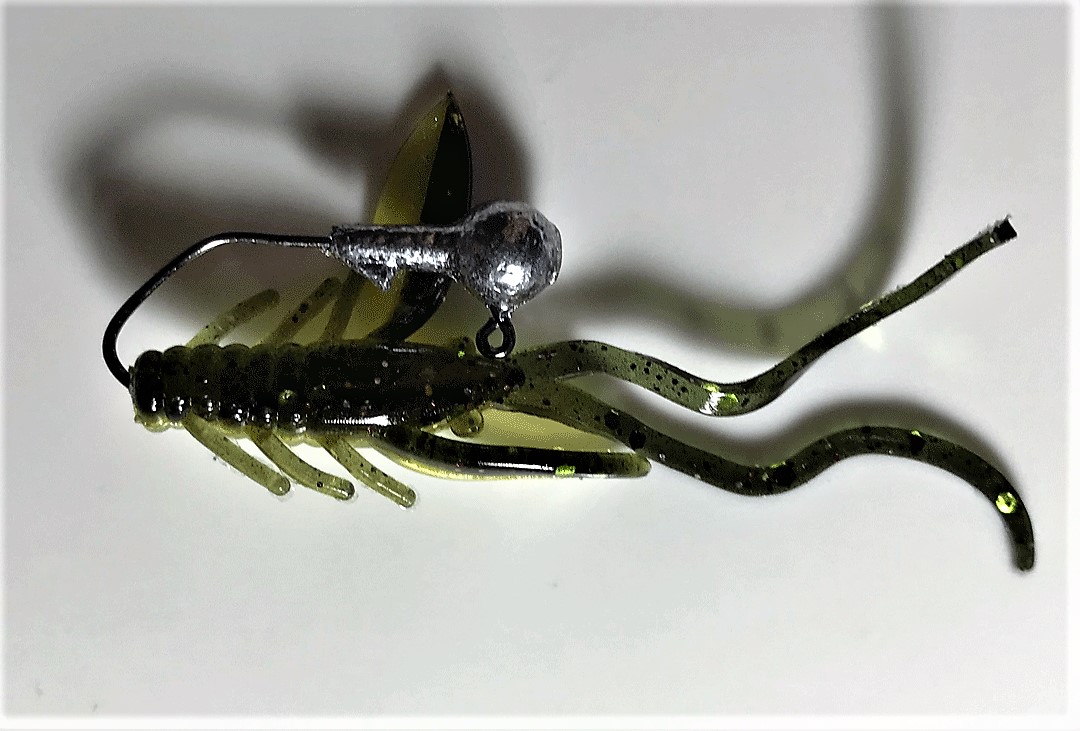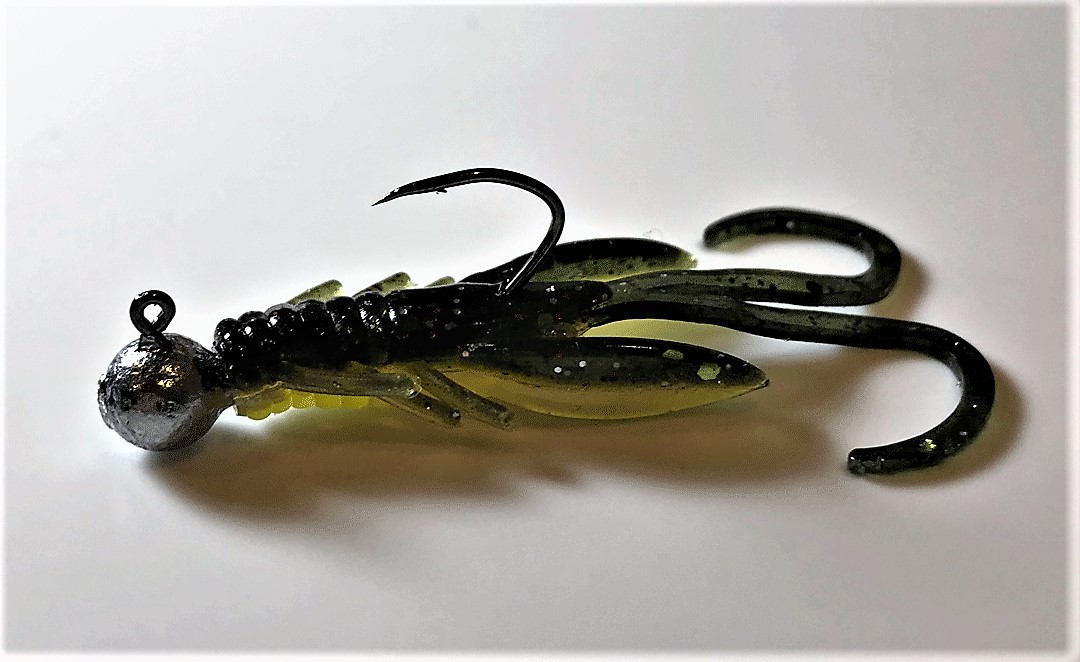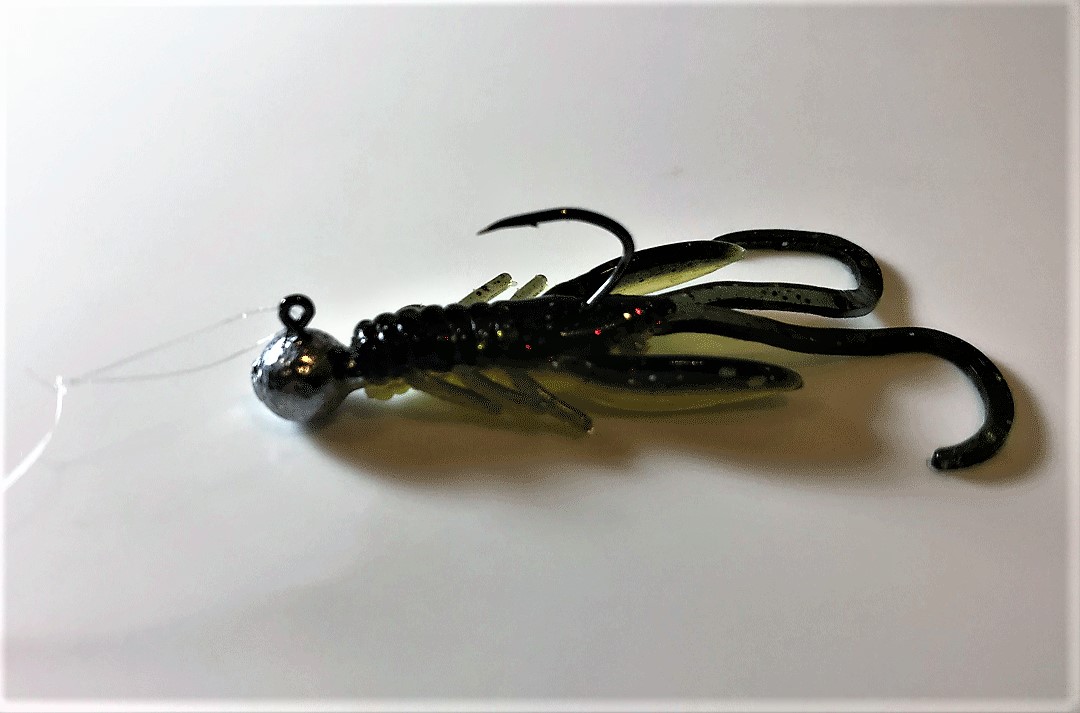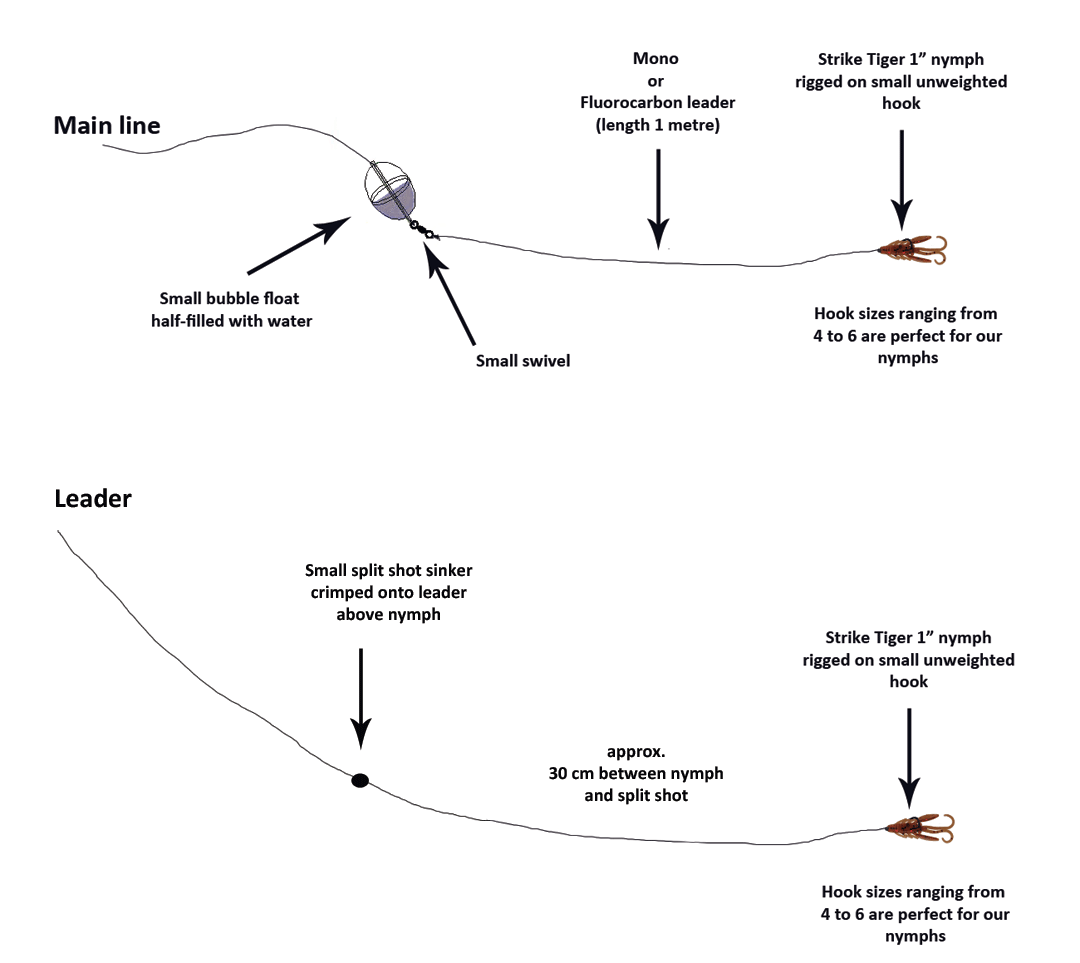
Step 1.

Choose your jighead. We recommend a Strike Tiger size 4 jighead for use with the Strike Tiger 1" nymph soft plastic. Selecting a jighead is easy if you follow the information below:
- Weight 1/32 size 6 - this is the smallest and lightest Strike Tiger jighead you will get. This size is best suited for finesse trout fishing applications in small creeks and streams. Best-suited for very small trout.
- Weight 1/32 size 4 - this is the lightest Strike Tiger jighead you will get. This size is best suited for finesse trout fishing applications in small creeks and streams.
- Weight 1/16 size 4 - this is a middle weight Strike Tiger jighead. It is suitable for both skinny water and lake applications.
- Weight 3/32 size 4 - this is the heaviest weight Strike Tiger jighead in a small size 4 hook. It's suitable for windy weather or deep water applications. You may also just want these for making super long casts.
Step 2.

Measure up your jighead that you have chosen against the body of the nymph. Get an idea of where the hook should come out. If you are using the recommended Strike Tiger size 4 jighead, then this area will always be near the eyes at the butt end of the nymph.
Step 3.

Thread the hook through, keeping it central in the body of the nymph.
Step 4.

Make sure the hook runs 'in-line' with the center of the body. Ensure that the body is straight. The hook should not protrude from the nymph at a weird angle.
Step 5.

Tie your fluorocarbon leader (or mono line) to the jighead using a loop knot connection. This will give your nymph extra freedom of movement and an even better swim action!
Step 6.
Your Strike Tiger nymph is now ready to fish. It should swim with the hook facing up.
A couple of simple, but deadly nymph retrieves
‘slow roll’
Slow rolling a Strike Tiger nymph soft plastic is exactly as it sounds. This is an easy retrieve where you slowly, but constantly retrieve the nymph along the bottom. It will work in lakes, rivers and even small creeks.
Start out by casting your nymph and let it sink to the bottom. You will know your nymph is on the bottom by watching your line – as soon as it goes slack, you are there. Next, lift your rod tip slightly. It’s now just a matter of winding your nymph back ever so slowly. You should feel your nymph touch the bottom every now and then. If the action is slow – try throwing in a few pauses. Extend the time you pause your nymph for in order to give the trout some extra time to observe your offering.
‘slow twitch’
Again, this technique is fairly self explanatory. This retrieve is particularly well suited to the Strike Tiger nymph. Start off exactly the same as per the ‘slow roll’ – cast out and let the nymph sink to the bottom. Next, slowly ‘twitch’ the nymph along the bottom while winding very slowly. Do this by applying short, but subtle twitches of your rod tip as you wind in. Aim to move your rod tip back and forth only a couple of inches.
By doing this, you will impart a very realistic swim action to your nymph. This presentation is reminiscent of food sources found on the bottom. It is a killer technique in both lakes and rivers!
Alternate rigging methods (no jighead)

General nymph tips
- Use a good quality fluorocarbon leader of about one full rod length.
- Mono line is fine to use, but you will have less sensitivity in return.
- A fine leader of 4 lb breaking strain will ensure greater casting distance.
- Matching your leader with 4 lb braid will extend this distance further.
- Use a good quality leader knot to join your leader to the main line.
- A surgeon's knot is easy to tie and provides a strong connection.
- A double-uni knot is also very easy to tie.
